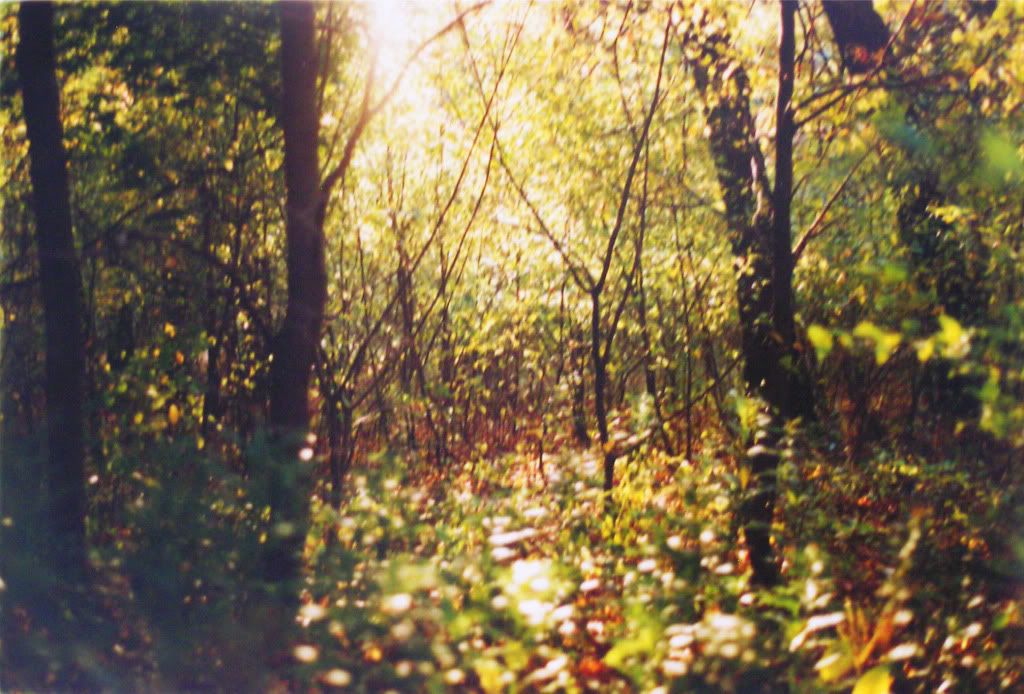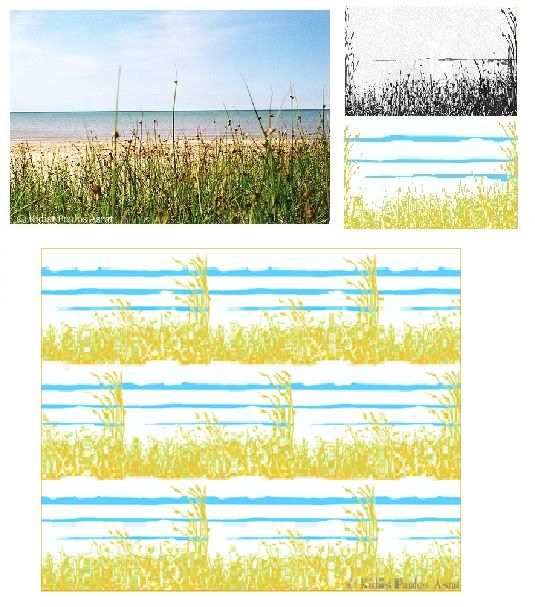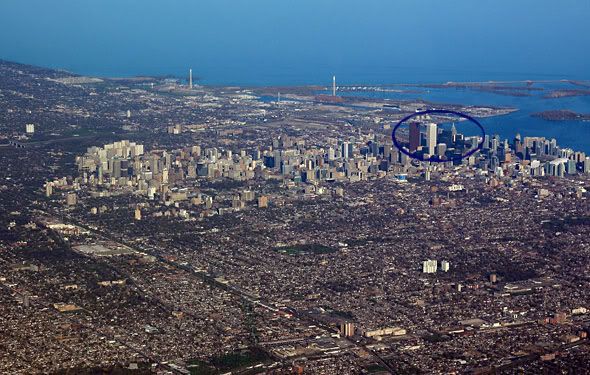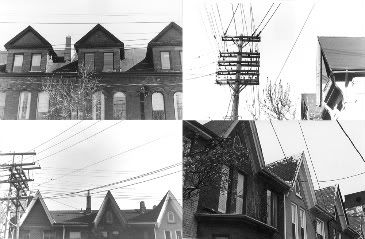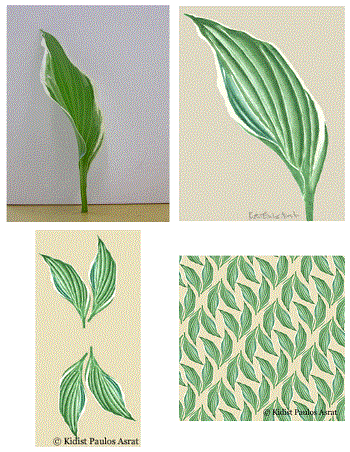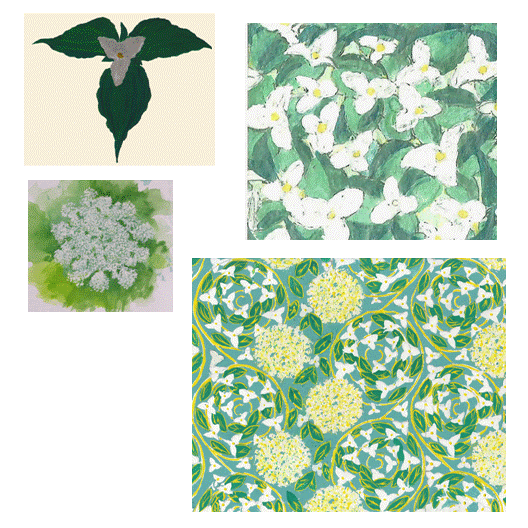Clockwise from top: Victorian townhouse; Wall hanging; Table cloth (detail); Card; Table runner (detail); Toronto is a unique city. In the southernmost part of the downtown, there are high rises tall enough to qualify as skyscrapers. Mies Van der Rohe, the German-American architect, has a fine example of one of his minimalist modern buildings which houses the
Toronto Dominion Centre on the grandly named King Street. In fact, most of the bank headquarters are in this part of the city. Is it an attempt (as Canadians always subtly do - but with belligerent denials) to mimic the formidable Americans, and in this case Wall Street in New York City?
Yet, there is another characteristic to this city. In contrast to this modernist influence, Victorian architecture makes up much of central and downtown Toronto. One example is the
Cabbagetown neighborhood. That is where I took the above photo of a pretty run-down Victorian townhouse. But look at the beautiful lacework on the gable of this building. This became the inspiration for my "Gable" pieces above. The final pieces are textile and graphic works: a wall hanging, a table runner, a table cloth, and a series of cards.
When I studied the townhouses, I realized that despite the intricate, lace-like carvings on many gables, what I liked most about them was their simple, triangular shapes. This led me to focus only on the tops of these buildings.
Gable PhotographsFirst, I did a series of gable photographs, which were exhibited in a local venue (my neighbor couldn't understand why I only had shots of the "tops", but I didn't want to go into a lengthy explanation with her). Then, as I grew to understand the gables more, I took a couple of short silkscreen printing course since I had started to work on transferring photographic images onto cloth. The thing with screen printing, especially the rudimentary kind which doesn't involve factory-like environments with complex machinery, is that you have to keep the colors minimal. Each color is separately applied. The fewer colors, the less (manual) work of applying messy paints onto fabric.
This way, the gables took on a much more graphic, and simplistic, form. This helped (encouraged) me to concentrate on their triangular shapes. Color started to become an important factor, which I could manipulate. I started working with juxtaposition of colors: does red and blue go best together, or red and yellow? How about the intensity of color - do saturated colors work well with pastels? What happens when several colors are together? The wall hanging was really the culmination of an exercise in color. The cards started to become more interesting when I added a second color to the windows.
I didn't realize as I was going through these explorations (I did start off in photography, and not in graphic arts) that a whole movement existed to understand the relationship of colors, and how we react to them. I found out about
Josef Albers, and his deceptively simple
squares, where Albers:
limited himself to square formats, solid colors, and precise geometry, yet was able to achieve a seemingly endless range of visual effects.[Source: Metropolitan Museum of Art]
The whole world of color started to open up, and this led to my full-scale investigation of color in art and design.
I may have started backwards, and the road was longer and more winding than it should have been, but I think without color, there would be no art or design. This is not a naive or simplistic comment. Our modern world has forgotten about color (is it black and white film that did that, or something more sinister such as a general decline in art and beauty?). But, it is good to know that we still have those references to fall back on, and pick them up from where they have been discarded.
[The next posting will be an unpublished essay I wrote on theories of color from Newton, Geothe down to the Impressionists. It is essentially an essay on the demise of color in art. I don't think we've been able to regain its importance yet.]



